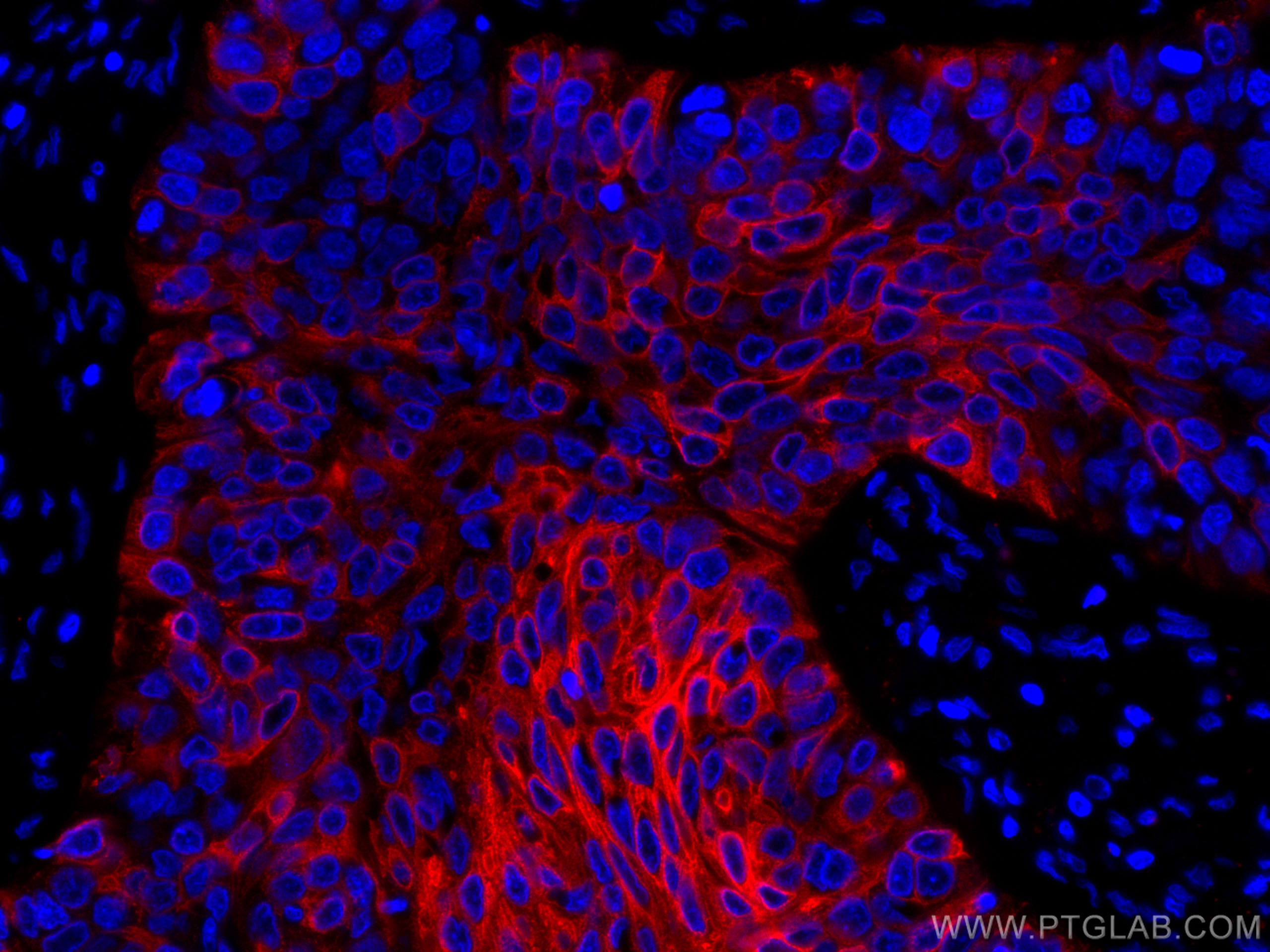验证数据展示
经过测试的应用
| Positive IF-P detected in | human oesophagus cancer tissue |
推荐稀释比
| 应用 | 推荐稀释比 |
|---|---|
| Immunofluorescence (IF)-P | IF-P : 1:50-1:500 |
| It is recommended that this reagent should be titrated in each testing system to obtain optimal results. | |
| Sample-dependent, Check data in validation data gallery. | |
产品信息
CL594-66727 targets Cytokeratin 5 in IF-P applications and shows reactivity with Human, mouse, pig samples.
| 经测试应用 | IF-P Application Description |
| 经测试反应性 | Human, mouse, pig |
| 免疫原 | Cytokeratin 5 fusion protein Ag24184 种属同源性预测 |
| 宿主/亚型 | Mouse / IgG1 |
| 抗体类别 | Monoclonal |
| 产品类型 | Antibody |
| 全称 | keratin 5 |
| 别名 | 58 kDa cytokeratin, CK 5, CK5, Cytokeratin 5, Cytoskeleton Marker, K5, keratin 5, KRT5, KRT5A, Type II keratin Kb5 |
| 计算分子量 | 590 aa, 62 kDa |
| GenBank蛋白编号 | BC024292 |
| 基因名称 | Cytokeratin 5 |
| Gene ID (NCBI) | 3852 |
| RRID | AB_2920028 |
| 偶联类型 | CoraLite®594 Fluorescent Dye |
| 最大激发/发射波长 | 588 nm / 604 nm |
| 形式 | Liquid |
| 纯化方式 | Protein G purification |
| UNIPROT ID | P13647 |
| 储存缓冲液 | PBS with 50% glycerol, 0.05% Proclin300, 0.5% BSA , pH 7.3 |
| 储存条件 | Store at -20°C. Avoid exposure to light. Stable for one year after shipment. Aliquoting is unnecessary for -20oC storage. |
背景介绍
Keratins are a large family of proteins that form the intermediate filament cytoskeleton of epithelial cells. Keratin expression is highly regulated, tissue specific, and varies according to cell-state. Type I keratins consist of acidic, low molecular weight proteins with MW ranging from 40 kDa (KRT19) to 64 kDa (KRT9). Type 2 keratins consist of basic or neutral, high molecular weight proteins with MW from 52 kDa (KRT8) to 67 kDa (KRT18). Keratin 5, one 58-kD type II keratin, is coexpressed with a 50-kD keratin 14 in stratified squamous epithelia. Keratin 5, one 58-kD type II keratin, is coexpressed with a 50-kD tyK14 in stratified squamous epithelia.
实验方案
| Product Specific Protocols | |
|---|---|
| IF protocol for CL594 Cytokeratin 5 antibody CL594-66727 | Download protocol |
| Standard Protocols | |
|---|---|
| Click here to view our Standard Protocols |

